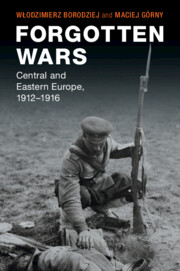Book contents
- Forgotten Wars
- Studies in the Social and Cultural History of Modern Warfare
- Forgotten Wars
- Copyright page
- Contents
- Figures
- Maps
- Capsules
- Additional material
- Introduction
- Part I The Fronts
- Part II The Rear
- Part III Occupation
- 8 The First Moments
- 9 New Orders
- 10 Mission civilisatrice
- Afterword
- Select Bibliography
- Index
10 - Mission civilisatrice
from Part III - Occupation
Published online by Cambridge University Press: 15 March 2021
- Forgotten Wars
- Studies in the Social and Cultural History of Modern Warfare
- Forgotten Wars
- Copyright page
- Contents
- Figures
- Maps
- Capsules
- Additional material
- Introduction
- Part I The Fronts
- Part II The Rear
- Part III Occupation
- 8 The First Moments
- 9 New Orders
- 10 Mission civilisatrice
- Afterword
- Select Bibliography
- Index
Summary
The soldiers and officers who went off to fight in the summer of 1914 not only had modern weapons but also held certain beliefs about the enemy and the territories in which the hostilities were to take place. For the most part they had scant information about the specific characteristics of Galicia, Serbia, the Kingdom of Poland, East Prussia, Lithuania, and Belarus, but they did not go there free of prejudice or lacking in a priori judgments. Sometimes their ideas combined to form a very precise image of a place. These fixed notions, which had little to do with reality but were nonetheless enduring, came to be known as stereotypes shortly after the end of the war. The American journalist and adviser to President Wilson who coined the term ‘stereotype’, Walter Lippmann, based his theory on an analysis of the American press during the Great War. It is likely that the Eastern Front, and especially the ways in which the Germans and Austrians perceived the East, would have provided Lippmann with even more interesting data.
- Type
- Chapter
- Information
- Forgotten WarsCentral and Eastern Europe, 1912–1916, pp. 314 - 348Publisher: Cambridge University PressPrint publication year: 2021

